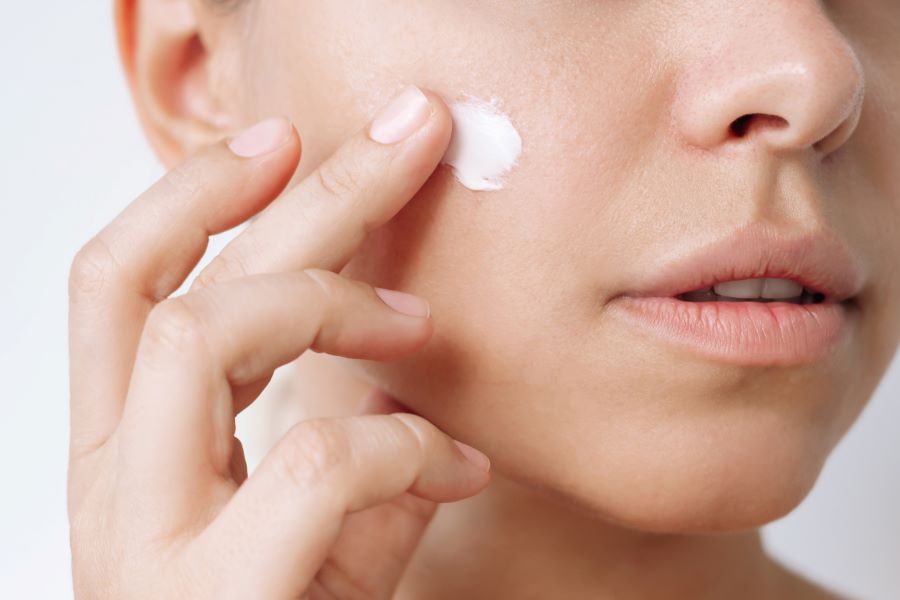Skin Fasting: The Minimalist Approach to Skincare
In a world saturated with multi-step skincare routines and endless product recommendations, a new trend is emerging that challenges everything we thought we knew about caring for our skin. Skin fasting, a radical approach to skincare, involves temporarily eliminating all products from your routine to allow your skin to reset and function naturally. This minimalist method has gained traction among beauty enthusiasts and dermatologists alike, sparking debates about the effectiveness of our current skincare practices. As consumers become more conscious of their choices and seek simpler, more sustainable solutions, skin fasting offers a compelling alternative to the product-heavy regimens that have dominated the industry for decades.

The concept draws inspiration from intermittent fasting, a practice that has gained significant attention in the health and wellness world. Just as intermittent fasting gives the digestive system a break, skin fasting aims to give the skin a chance to recalibrate and function without external interference.
The Science Behind Skin Fasting
The skin is a complex organ with its own regulatory mechanisms. It produces natural oils, maintains its pH balance, and constantly renews itself through cell turnover. Proponents of skin fasting argue that excessive use of skincare products can disrupt these natural processes, leading to dependency and potentially weakening the skin’s barrier function.
When we constantly apply products, our skin may become reliant on them for hydration and protection. This can lead to a feedback loop where the skin produces less of its natural oils, thinking that external sources will provide what it needs. By temporarily removing all products, skin fasting aims to break this cycle and encourage the skin to regulate itself.
Some dermatologists support the theory behind skin fasting, noting that it can help identify which products are truly necessary and which might be causing irritation or other issues. However, it’s important to note that research on skin fasting is limited, and more studies are needed to fully understand its long-term effects.
Implementing Skin Fasting: Methods and Approaches
There’s no one-size-fits-all approach to skin fasting, and the duration can vary from a single day to several weeks. Some practitioners advocate for a complete elimination of all skincare products, including cleansers, while others suggest a more gradual approach.
A common method is the “one-day fast,” where individuals skip their entire skincare routine for 24 hours once a week. This allows the skin to experience its natural state without being overly disruptive to established routines.
For those hesitant to completely abandon their routines, a “partial fast” might be more approachable. This involves eliminating all but the most essential products, typically keeping only a gentle cleanser and sunscreen.
More extreme versions of skin fasting can last for several days or even weeks. During this time, practitioners may use only water to cleanse their face, allowing their skin to fully reset.
Potential Benefits and Risks
Advocates of skin fasting report numerous benefits, including improved skin texture, reduced acne breakouts, and a more balanced complexion. By allowing the skin to regulate its own oil production and pH levels, some users find that their skin becomes less reactive and more resilient over time.
Another potential benefit is the opportunity to simplify skincare routines. Many people accumulate a vast array of products over time, and skin fasting can help identify which ones are truly necessary and effective.
However, skin fasting is not without risks. For those with specific skin conditions such as eczema or severe acne, completely eliminating treatments could lead to flare-ups. Additionally, skipping sunscreen can increase the risk of sun damage and premature aging.
It’s also worth noting that the initial phase of skin fasting can be challenging. As the skin adjusts, some individuals may experience increased oiliness, dryness, or breakouts. This “purging” phase is often temporary but can be discouraging for those expecting immediate results.
Who Should Consider Skin Fasting?
Skin fasting may be particularly beneficial for those with sensitive skin or those who suspect they might be overusing products. It can help identify potential irritants and simplify complex routines.
Individuals with relatively healthy skin who are curious about their skin’s natural state may find skin fasting to be an enlightening experience. It can provide insights into how the skin functions without interference and may lead to a more mindful approach to skincare.
However, skin fasting is not recommended for everyone. Those with severe skin conditions, active infections, or those undergoing treatments prescribed by a dermatologist should consult with their healthcare provider before attempting any form of skin fasting.
The Future of Skincare: Embracing Minimalism
The rise of skin fasting reflects a broader trend towards minimalism and sustainability in the beauty industry. As consumers become more aware of the environmental impact of excessive product use and the potential harm of over-processing their skin, there’s a growing interest in streamlined, effective routines.
This shift is influencing product development, with many brands now focusing on multi-functional, gentle formulations that support the skin’s natural processes rather than overriding them. The concept of “skinimalism” – using fewer, but more effective products – is gaining traction and may represent the future of skincare.
While skin fasting might not be the solution for everyone, its popularity has sparked important conversations about our approach to skincare. It challenges us to reconsider the notion that more products always equal better results and encourages a deeper understanding of our skin’s innate abilities.
As with any significant change to skincare routines, it’s crucial to listen to your skin and consult with a dermatologist if you have concerns. Whether you choose to embrace skin fasting fully or simply incorporate elements of minimalism into your routine, the key is finding an approach that works for your unique skin needs while promoting overall skin health and well-being.





